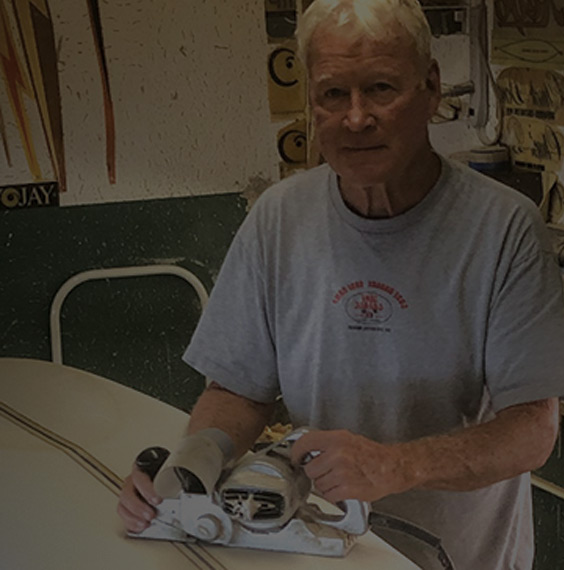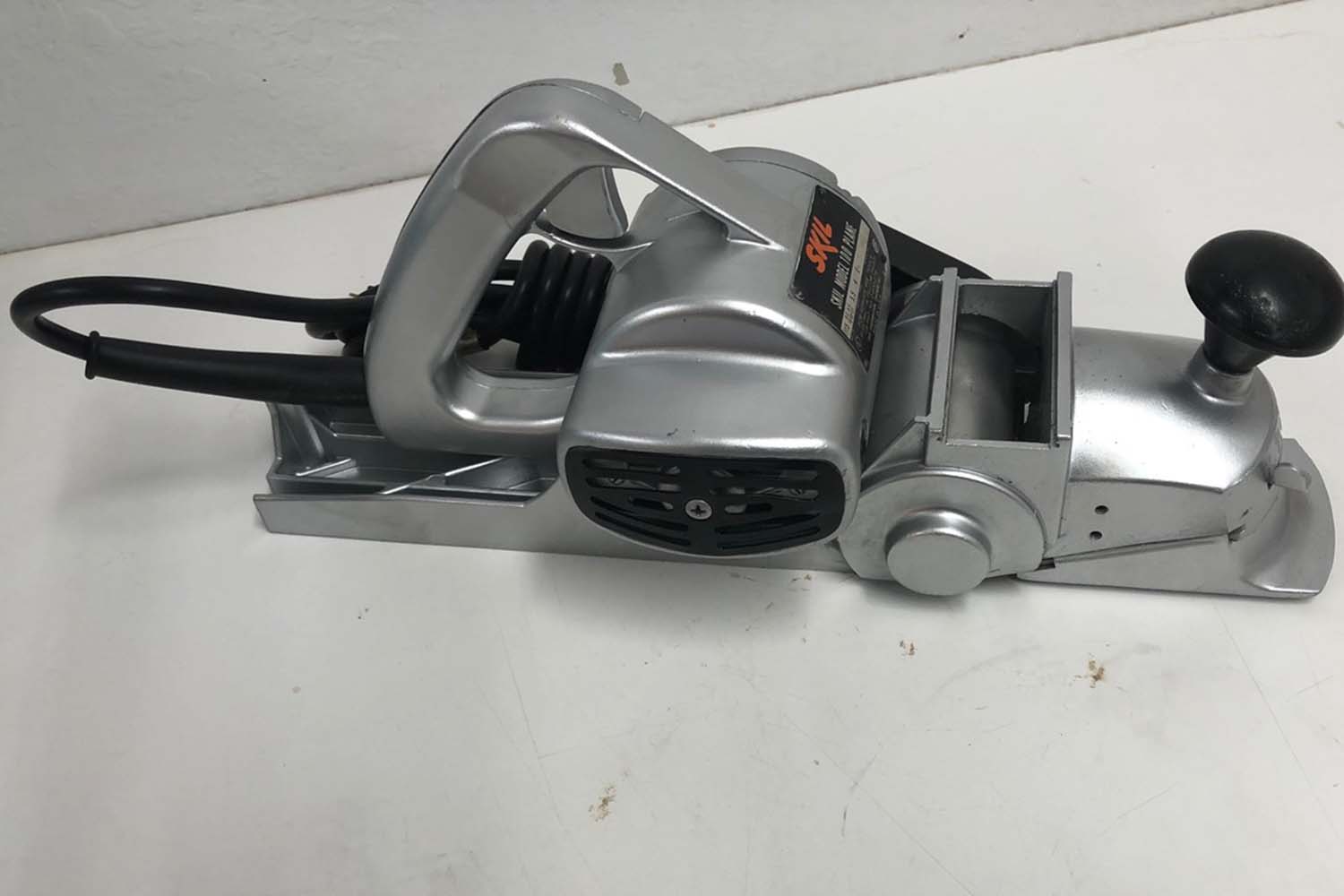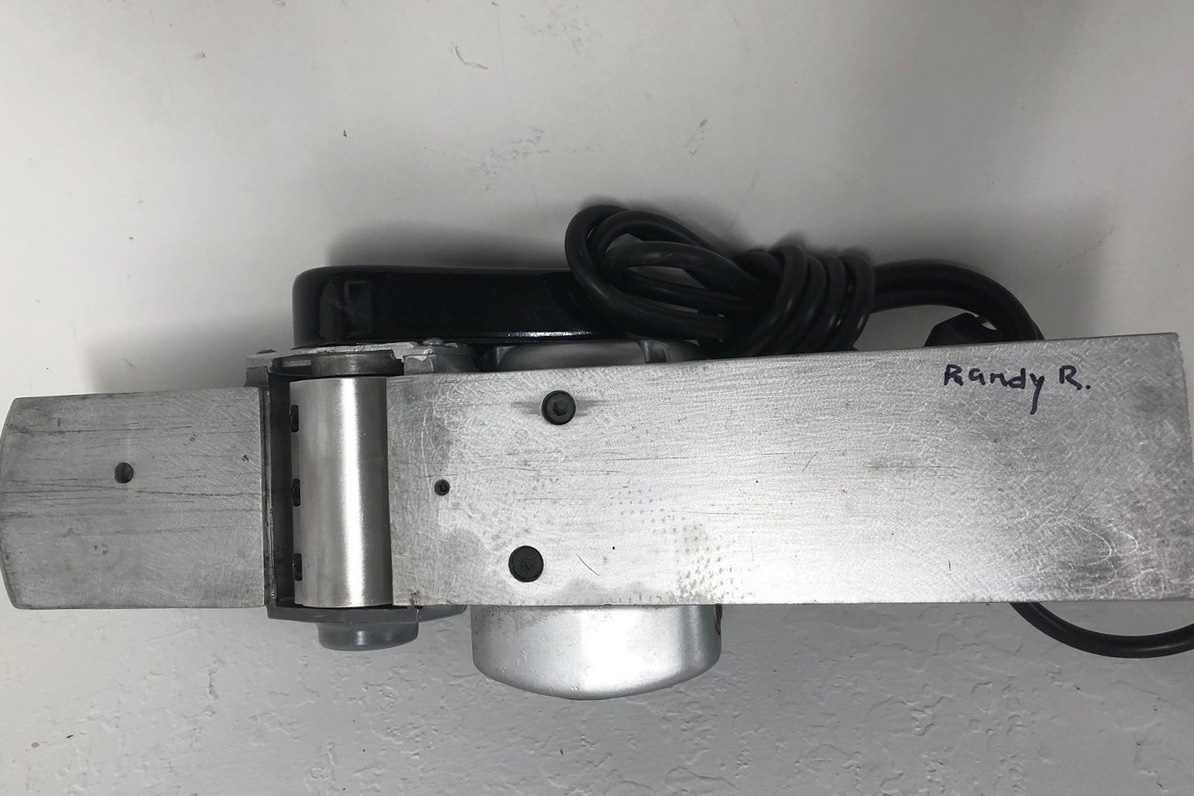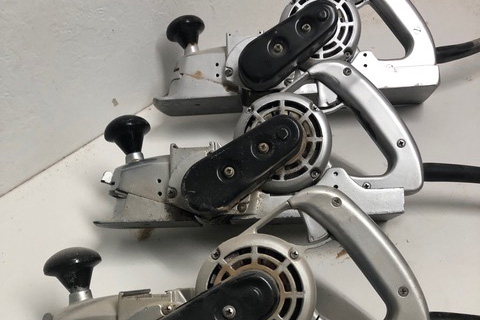

The Vintage Planer That
Shaped Custom Surfboards
The Vintage Planer That Shaped Custom Surfboards
By Grainger Editorial Staff 2/28/23
Randy Rarick began a lifelong career in surfing before he hit his teens. He started in the 1960s fixing and then later shaping surf boards on Hawaii’s famed North Shore.
“When I was 11 years old, I walked into a surfboard factory in Honolulu and the smell of resin was so intoxicating I said, ‘I want to become a surfboard builder.’ So, I actually repaired surfboards and fixed dings, as we call them, for a local neighborhood crew,” Randy said. “I got so good at it that I got a job at 14 years old in one of the local surf shops.”
Over the years, Randy has turned his passion for surfing into a career that includes starting and managing the first worldwide pro surfing tour and building custom surfboards for the sport’s elite. Perfecting his craft was made possible with the help of one classic tool that he says changed everything: a long-discontinued power planer that can still fetch hundreds of dollars on the resale market — the SKIL 100.


It Starts with a Blank
Invented in the late 1940s, the planer was a response to the need for a more efficient tool in the post-WWII construction boom. Most electric planers at the time required two operators; this new version – created by a Michigan farmer who sold the rights to SKIL – needed just one. Though it was effective for construction at the time, surfboard shapers discovered it to be just the right tool for their unique craft.
Shaping is just one step in the process of crafting a bespoke, prized surfboard. A shaper, Randy says, is “the guy who actually shapes the core or the blank into the finished shape of the board. You have kind of a big blocky piece of material and you have to bring it down to the profile and the shape of the board.”
Back in the 1960s and ’70s, blanks were made of polyurethane foam with redwood, bass, and balsa wood stringers for strength and weight and back then everything was handmade. Before the SKIL 100, shapers used hand tools, hand planes, block planes and sandpaper. But Randy said that when the planer came along, it just made the job a lot easier because you could rough-shape the blanks much more quickly.
MORE CLASSIC TOOLS: See how an 1800s-era plow keeps a family farm thriving | Classic saw thrives after 50 years of building


“We used to do 5 to 10 boards a day. After a long day of power-planing, the planers would heat up.” Randy said. “The SKILs were good workhorses and didn't break down. If you broke a belt or wore out the trigger or the brushes, you could just replace them. But the tool took a beating and you could just keep going.”
Durability is just one quality that set these tools apart. The SKIL 100 also has specific features that make it perfect for shaping material into custom boards. “An adjustable head,” Randy said, “makes it easier to move the planer along the curved lines of the blank and to change the height of the blade. A surfboard is curved so the adjustable head allows you to adjust the height of the blade by opening it up to an eighth-inch cut or down to a zero cut.”
The heft and power of the SKIL 100 Planer also make it easier to remove more material with each pass, making the job of shaping a blank quicker and more efficient. “Weight control and the actual heft really helps because the planer sits firmly down on the board,” Randy said. “Back in the ’60s, boards were in the 10-foot range and blanks were bigger, thicker and had a lot more wood in them. Now surfboards are super light. They use carbon fiber and hardly use wood and other materials anymore.”
Another prized quality of this particular model, according to SKIL representative John Stevens, is the length of the tool and its ability to cover a larger surface area in one pass. “The length of what they call the shoe makes it really nice to cover a larger area,” Stevens said. “Most planers today are a little better than 12 inches. And the SKIL 100 is at about 16 inches.”
Shape Shifting
Due to changes in surfboard materials and how blanks are manufactured, lightweight planers have found their place in the field. “The little plastic ones are really light,” Randy said. “They're easier to maneuver around, especially on today’s shorter boards, which are around the 6-foot range.”
Manufacturers also use machining to speed up the shaping process and increase production. The shaping machines are programmed with a router to pre-shape board blanks, which was the primary job of the SKIL, making it obsolete once surfboard production took off.
“A computer, Randy said, “will do a rough shape and what we call brushing or scruffing and finish a board off in 15 minutes. To churn out numbers, machining works really good.”
Randy and his contemporaries understand how their prized planer fell out of favor in the broader market. But if you want to create a custom, hand-crafted surfboard, he said nothing comes close to the SKIL 100 Planer. “They’ve become obsolete in the last 30 or 40 years, and yet they still work better for shaping than the planers that have come out since then,” Randy said.
In recent years, the custom surfboard industry has found a new following of younger artists who have discovered the many benefits of the SKIL 100 for turning out custom-crafted boards. “In the last 10 years,” Randy said, “who we call ‘hipster shapers’ have come back into it. They realize a SKIL allows you to custom-make and design a board. And it's become kind of fashionable now, rather than using a computer. They realize these [older] guys knew what they were talking about. So, it comes back around."


"I've got four of them. One's got a cutter head; one's got an abrasive head and one's got a spiral cutting head. Then I got a backup just in case any of those break. I still use four different SKIL planers, each with a different purpose for a different type of material."
In Search of the Prized Planer
The SKIL 100 was discontinued in the 1980s. Since then, surfboard shapers, carpenters and other fans of the tool search online marketplaces, garage sales, thrift shops and anywhere else they hope one might turn up. “I know guys who scour the Midwest,” Randy said, “they go to hardware stores to try to find one that might still be on the rack somewhere. And I know guys who leave California and drive cross-country hitting the hardware stores hoping to find one still in a box.”
John, who lives in Northern California, has also noticed this trend. “If I go down to Santa Cruz, any surfboard maker will have 10 of them in a rack and probably none of them work, but he keeps them for parts,” he said. “It's nuts. And if you go up to Northern California where I live, away from the ocean, you'd probably come across one at a garage sale. But in Santa Cruz, if people find one, they’ll guard it to make sure nobody steals it because they know it can be worth anywhere from $700 to $1500 or more. Once something attracts that much money, you have to ask why.”
Randy believes the tool had a big impact on the surfing industry and the sport overall. “Without the SKIL 100 Planer,” he says, “the sport wouldn't have progressed as much as it did when it did. I've probably shaped about 15,000 surfboards over my career and there's guys I know who have shaped 50 or 60,000.”
You agree that any and all narratives, photographs, testimonials and other items or materials (except for your personal information) disclosed or submitted to W.W. Grainger through this site or by other means ("submissions") are neither confidential nor proprietary to you. All submissions become W.W. Grainger’s property upon submission to W.W. Grainger. By making a submission to W.W. Grainger, you assign to W.W. Grainger all rights, title and interests, including copyrights, in the submission. W.W. Grainger has no obligation (i) to keep any submission confidential; (ii) to pay you or anyone any compensation for any submission or for using a submission; or (iii) to respond to or acknowledge any submission. You represent and warrant that no submission you make will violate any right of any third party, including, but not limited to, copyright, trademark, patent, trade secret, privacy or other personal or proprietary right. By making a submission, you agree that W.W. Grainger has the right (but not the obligation) to copy, publish, distribute or use such submission for any purpose, including, but not limited to, advertising, promotional, product development or other commercial purposes, without compensation to you or to any other person. You are and shall remain solely responsible for the content of any submission you make.
The information contained in this article is intended for general information purposes only and is based on information available as of the initial date of publication. No representation is made that the information or references are complete or remain current. This article is not a substitute for review of current applicable government regulations, industry standards, or other standards specific to your business and/or activities and should not be construed as legal advice or opinion. Readers with specific questions should refer to the applicable standards or consult with an attorney.






